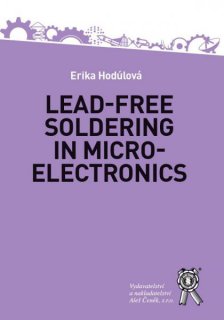Lead-free soldering in microelectronics

| Autor: | Hodúlová Erika |
| Nakladatel: | Vydavatelství a nakladatelství Aleš Čeněk s.r.o. |
| Rok vydání: | 2017 |
| Počet stran: | 92 |
| ISBN/EAN: | 9788073806156 |
| Místo vydání: | Plzeň |
| Kategorie: | Knihy Obory Ostatní Ostatní Studenti |
| Papírová kniha: | odkaz na knihu |
Cena papírové knihy: 120,00 Kč
| Cena na 365 dní: | 60,00 Kč |
| Cena na 180 dní: | 42,00 Kč |
| Cena na 60 dní: | 18,00 Kč |
| Cena na 30 dní: | 15,00 Kč |
(zatím nikdo nehodnotil)
The aim of this work is to provide the ingredients for understanding together with knowledge of the implementation of lead-free solder alloys, soldering technology and reliability in interconnection technology. Many of the lower melting point solders have precious elements, whereas some of the inexpensive alternatives wet poorly, are prone to oxidation during soldering and tend to corrode. The main candidate can be SnCu, SnAg, SnAgCu, solders system with small amount of Bi and In. During soldering, some of the metal substrate is dissolved into the molten solder. As a result, the solder becomes supersaturated with the dissolved metal and a layer of an intermetallic compound is formed at the metal-solder interface. The intermetallic layer continues to grow after solidifi cation due to thermally activated solid state diffusion mechanisms. The formation and growth of intermetallic at the solder-substrate interface affect the solderability and reliability of electronic solder joints. In the present work, the kinetics of intermetallic phase formation between Cu substrate and Sn1.5Ag0.7Cu9.5In solder alloy is studied and compared to SnAgCu and SnAgCuBi solders. Sn1.5Ag0.7Cu9.5In alloy is a candidate material for leadfree soldering at temperatures close to 200 °C due to signifi cant amount. The excessive intermetallic phase formation may lead to a premature degradation of the working solder joint. Bismuth decreases the rate of Cu3Sn layer formation. The effect of indium on the intermetallic layer formation is two-fold. First is to decrease the rate of Cu3Sn layer formation and the second is to increase the rate of Cu6(Sn,In)5 layer formation.
Popis
Obsah
Ukázky
Komentáře čtenářů
Zatím nikdo nevložil komentář k této položce.
Obory
- Právo
- Dějiny a teorie práva
- Finanční a daňové právo
- Mezinárodní a evropské právo
- Občanské právo
- Obchodní právo
- Pracovní právo a právo sociálního zabezpečení
- Právní předpisy
- Správní právo
- Trestní právo
- Ústavní právo
- Politologie a mezinárodní vztahy
- Psychologie a sociologie
- Filosofie
- Ekonomie
- Archeologie
- Jazyky
- Medicína
- Ostatní






